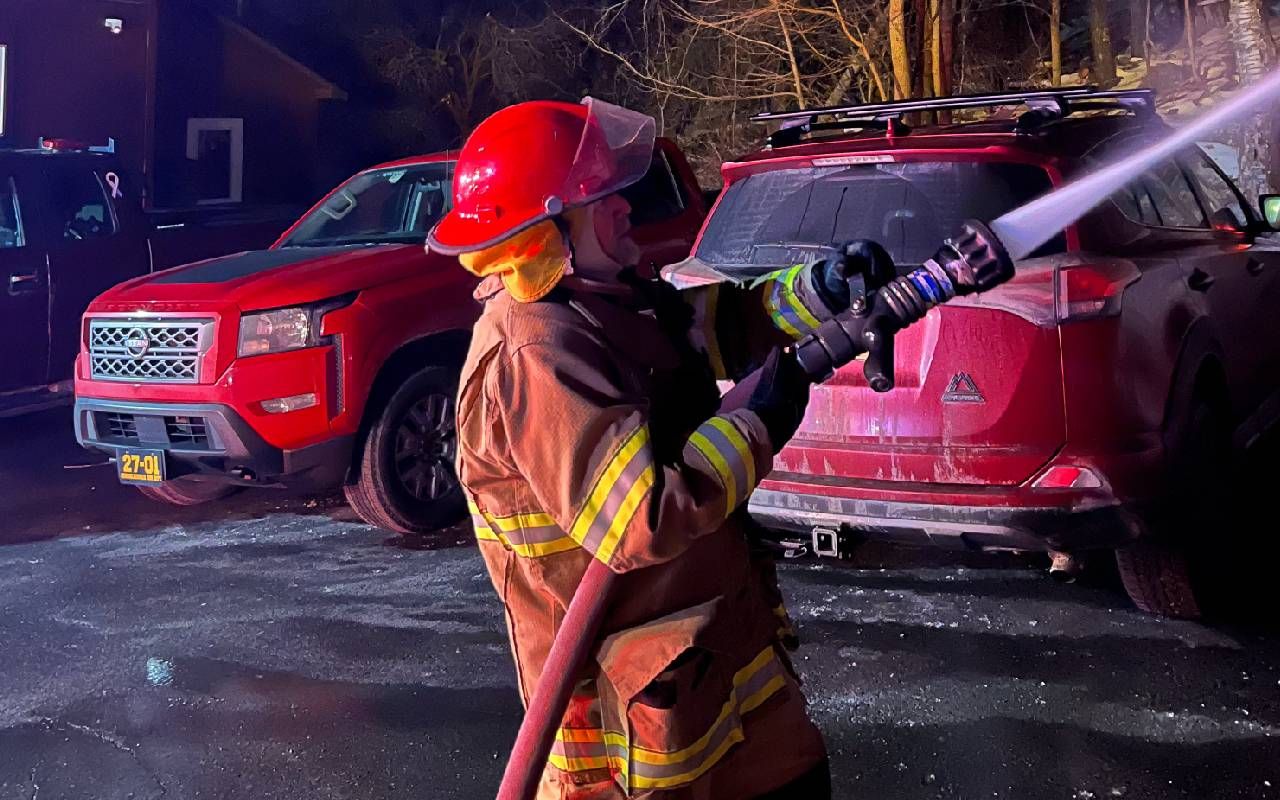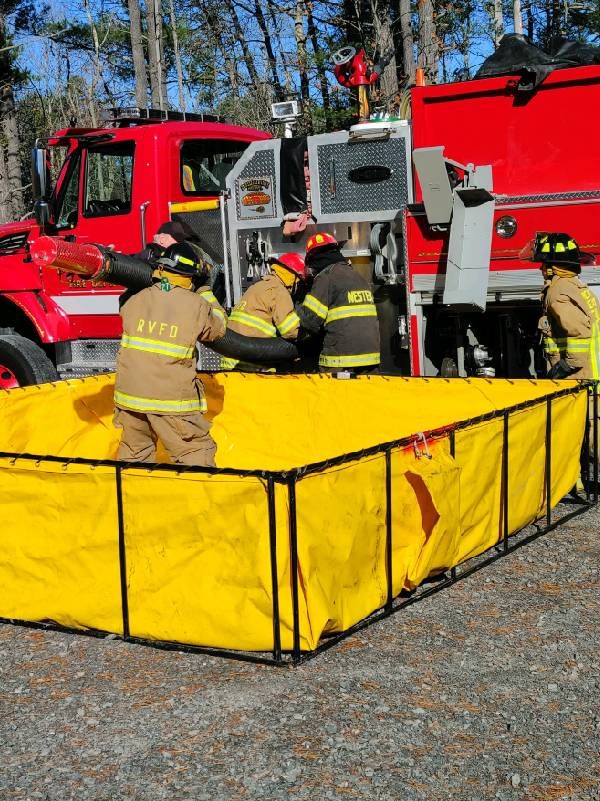Becoming a Firefighter in Retirement
Part 2 of our story about a 67-year-old newbie firefighter who grabs the brass ring — or nozzle — by attending a boot camp for volunteers
Volunteer Fire Departments are, when the alarm goes off, almost the only example of enthusiastic unselfishness to be seen in this land. They rush to the rescue of any human being and count not the cost.— Kurt Vonnegut Jr.

It's 29 degrees and the sun has long since departed. About 15 of us are standing in a semicircle outside the firehouse in East Berne, New York. We're shivering in various states of undress, waiting for the instructor to emerge and, in his signature semi-stealth manner, start his timer and say, "Go!"
By the fourth time through, it feels like my jacket sleeves and gloves are full of molasses.
This is the "donning" drill, the ritualistic start to every class in this 79-hour course for state certification as an exterior firefighter. The 25 pounds of boots, pants, jacket, fire hood, helmet and gloves that constitute "turnout" gear for structural firefighting are piled at our feet.
On the instructor's signal, we have to get it all on, zipped up, cinched up and Velcroed inside of one minute. I clock in at a gratifying 55 seconds — the first time. Then we're told to shed everything and we do it again. And again.
By the fourth time through, it feels like my jacket sleeves and gloves are full of molasses and I'm lagging.
Firefighting for Beginners, of All Ages
It's worse when I'm standing next to a 16-year-old, trying to match her agility. (Sixteen is the youngest age at which they allow trainees into the course; there is no upper age limit but I was confirmed to be the oldest student in my class.)
It took me by surprise, how fast I could wear myself out just by dressing. Of course, at home, my partner isn't standing over me with a stopwatch.
Cardiac-related events accounted for 43% of on-duty fatalities.
The course, known by its shorthand "BEFO" (Basic Exterior Firefighting Operations) essentially eats your life for three months, three-to-four-hour classes two evenings a week and a couple of six-hour Saturday trainings.
The course stresses practical skills like "throwing" extension ladders up against buildings or handling fire hoses. These are where you find out if you and the fire service are made for each other or a laughable mismatch. A 2½-inch attack hose with nozzle is a force to be reckoned with. Fully "charged" — pressurized with water — think of it as a 100-foot python that does not want to be moved.
Another revelation: I had no idea how hard it is to pick up and throw a 50-foot roll of fire hose so that it rolls out in a straight line. Luckily, I found that a good way to build upper-body strength is doing curls with the 1,400-page "Essentials of Firefighting" textbook.
Plenty of Classwork, Too
Much of the course is taught indoors, before a seemingly endless procession of PowerPoint slides, obviously designed to test our mental endurance and durability of our "glutes." During the unit on effective radio communications, one slide offers the helpful tip to "try to pronounce words correctly."

When Ben Franklin created the prototype for the modern volunteer fire company in 1736, I doubt he ever envisioned BEFO (or the longer course known as "Firefighter One").
Life in the volunteer fire service used to be largely improvisational and frankly, a little ragtag in many cases. Over the years, the increasing load of required training has produced a much more professional cadre but can also be a drag on recruitment and retention, which is the biggest challenge to modern-day rural fire companies.
A Job for Everybody
In New York State, the more ambitious BEFO grads advance to the interior firefighter course. This is the one for those who can't wait to strap on an additional 30 lb. of air pack and charge into burning buildings.
I'm fortunate, the way this state has structured things, to be able to opt out of that and concentrate on less strenuous but no less important functions, such as driving the engines and operating the pumps. Even if all you can do is direct traffic, help wash the engines after a call, or flip pancakes at the ubiquitous fundraising breakfast, there's "a job for everybody," as the chiefs like to say.
When I first started appearing at company meetings, the chief must've sized up my gray beard and thinning hair and began vetting me by asking, "How is your heart?" He informed me that heart attack was the leading cause of line-of-duty deaths among firefighters.

Indeed, the National Fire Protection Assn. reports that "cardiac-related events accounted for 43% of on-duty fatalities over the 10 years ending in 2021, the largest single share." And statistically, at least, age certainly amplifies the risk.
According to the same report: "The death rate for firefighters aged 60 and over was almost three times the average. Firefighters aged 50 and over accounted for about half of all the on-duty firefighter deaths over the five-year period, although they represent only one-quarter of all the career and volunteer firefighters in the U.S."
Cancer is also a rapidly rising threat, given the toxic gasses released by the combustion of synthetic materials throughout modern buildings.
The Benefits of Joining the Service
For me, the risks and inconvenience of joining the fire service have been outweighed by the benefits. "Chief" among the benefits (besides riding in fire engines) has been a path to community engagement, new friendships and lifelong learning, not to mention the prophylactic against becoming a terminal sofa spud.
When I finally downloaded my state certificate as an Exterior Firefighter in late December, it gave me as much pride as my college diploma or any journalism award.
But I still wonder, at 67, how many years of active service I have left in me. Those who have been doing this for a while know the value of staying in shape. A former chief of my company has recently added pushups to his morning routine, "just to see how many I could do," he explains. "I'm up to 70," he brags.
So is he — almost; he'll be 70 on his next birthday.

Read More

